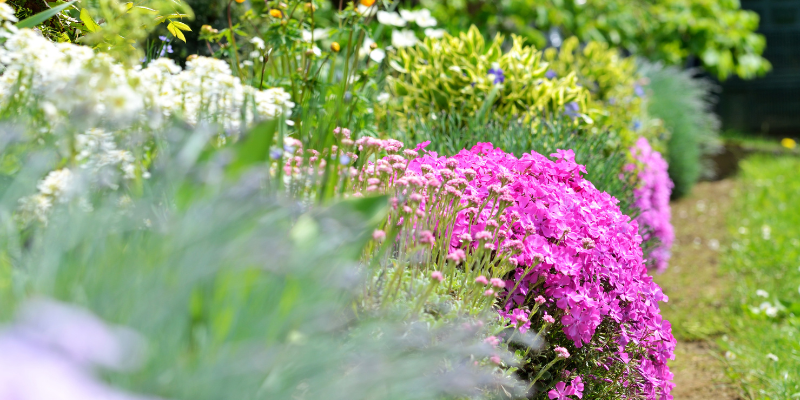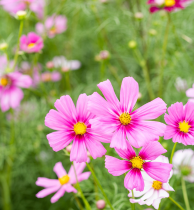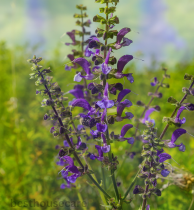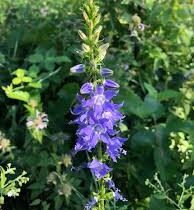Planting Perennials in Fall
As the leaves turn and temperatures drop, many gardeners may feel the urge to put away their tools and prepare for winter. However, fall is an exceptional time for planting perennials. With a bit of planning, you can create a garden that bursts with life when spring arrives. This comprehensive guide explores the numerous benefits of fall planting and provides tips to ensure your perennials thrive.
Consistent Fall Weather: A Gardener’s Ally
Unlike the unpredictable weather of summer, fall often brings more stable conditions. With milder temperatures and fewer weather extremes, this season creates an ideal environment for planting perennials in fall .
Understanding Seasonal Changes
As summer transitions to autumn, plants experience a shift in growth patterns. Cooler air temperatures coupled with warm soil create the perfect conditions for root development. This stability means less stress on your plants, allowing them to focus on establishing strong root systems instead of coping with the heat.
The Importance of Temperature
The soil temperature remains warmer for a longer period in the fall compared to spring, providing a conducive environment for root growth. This phenomenon is crucial, as healthy roots are the foundation for robust plant growth. When Planting Perennials in Fall, they can take advantage of these conditions to develop before winter sets in.
Welcoming Warmer Soil: Nurturing Root Growth
While the air cools, the soil retains warmth from the summer sun. This warmer soil temperature encourages faster root growth, which is vital for the health of your perennials.
Soil Temperature and Plant Health
Root systems are more active in warmer soil, which allows plants to absorb water and nutrients more effectively. This advantage helps perennials establish themselves quicker than if planted in colder spring soil. The result is a more resilient plant that can flourish when spring arrives.
Preparing Your Planting Site
Before planting, ensure the soil is well-draining and rich in organic matter. Consider conducting a soil test to determine pH levels and nutrient content. Amend the soil with compost or well-rotted manure to enhance its fertility. By creating an optimal planting environment, you provide your perennials the best chance for successful growth.
Reduced Weed Competition: A Favorable Environment
One of the often-overlooked benefits of fall planting is the decreased competition from weeds.
Why Weeds Slow Down
As temperatures drop, many weeds enter dormancy, allowing your newly planted perennials to flourish without the stress of competing for resources. This reduced competition means that your plants can access more water, nutrients, and sunlight, essential for their establishment.
Strategies for Weed Management
Even with fewer weeds, it’s still important to manage any that do emerge. Consider applying a layer of mulch around your perennials after planting. Mulch not only suppresses weed growth but also helps retain soil moisture and maintain a stable soil temperature.
More Time for Gardening: Fall’s Advantage
With the hectic pace of summer winding down, fall often presents a more leisurely schedule for gardeners.
Finding Your Rhythm
As summer activities fade, many find they have more time to dedicate to their gardens. This newfound time allows for thoughtful planning and execution, ensuring that perennials are planted correctly and given the care they need to thrive.
Enjoying the Process
Take advantage of the cooler weather to enjoy your gardening experience. Spend time preparing your garden beds, selecting plants, and designing your landscape. This intentional approach can lead to greater satisfaction and a more successful garden.
Fall-Planted Perennials: A Smart Investment
Planting perennials in the fall is akin to making a wise financial investment for your garden’s future.
Building Your Garden Equity
By planting in the fall, you’re effectively giving your plants a head start. Established perennials are more resilient and bloom earlier in the spring, providing you with a more vibrant garden that requires less effort in the following seasons.
Long-Term Benefits
Perennials can thrive for many years when properly cared for, offering beauty and interest throughout the seasons. Investing in them in the fall means enjoying their blooms and foliage for years to come, making it a smart choice for both new and experienced gardeners.
Synchronizing Perennials with Spring Blooming Bulbs
A well-planned garden can feature a stunning array of colors, especially when perennials and spring-blooming bulbs are planted together.
The Art of Coordination
Fall is the ideal time to plant not only perennials but also spring-blooming bulbs like tulips, daffodils, and hyacinths. By carefully coordinating these plantings, you can create a visually striking garden that blooms sequentially, ensuring that there’s always something to admire.
Designing for Visual Impact
Consider using bulbs to fill in spaces around your perennials. For example, planting daffodils alongside early-blooming perennials like hellebores can create a beautiful tapestry of colors. When the bulbs bloom, they’ll provide a stunning backdrop for the perennials, enhancing the overall aesthetic of your garden.
Getting Ahead in Garden Design: Planning for Success
Fall planting provides an excellent opportunity to plan and design your garden for the upcoming seasons.
Visualizing Your Space
As you select and plant perennials, take time to visualize how your garden will look in the spring and summer. Consider factors like height, color, and blooming times to create a harmonious layout.
Creating a Cohesive Design
Mixing perennials with various textures and colors can result in a dynamic garden space. Use taller plants in the back and shorter ones in the front for depth. Group plants with similar care requirements to simplify maintenance.
Early-Blooming Perennials: Optimal Growth with Fall Planting
Certain early-blooming perennials thrive when planted in the fall, offering you an extra incentive to plant during this season.
Benefits of Early Bloomers
Plants like primroses, bleeding hearts, and columbines benefit from fall planting because they have more time to establish their roots before winter. This head start leads to earlier blooms in spring, providing a lovely display that can brighten your garden when little else is in bloom.
Selecting the Right Early Bloomers
When planning your garden, consider including a variety of early bloomers. They not only enhance spring beauty but also support local pollinators as they emerge from winter dormancy.
Practical Tips for Successful Fall Planting
To ensure your fall-planted perennials thrive, follow these essential tips:
Timing Is Key
Aim to plant your perennials at least six weeks before the first expected frost. This timeline allows plants enough time to establish their roots before the ground freezes, setting them up for success in spring.
Soil Preparation Matters
Prepare your soil ahead of time by removing any debris and weeds. Test the soil pH and amend it with compost to improve fertility. Well-draining soil is crucial for root health, so consider adding sand or perlite if your soil tends to retain water.
Watering Techniques
Newly planted perennials require consistent moisture to help establish their root systems. Water them deeply after planting, and continue to check moisture levels throughout the fall. Adjust your watering routine based on rainfall and temperature.
Mulching for Protection
Applying a layer of mulch around your perennials offers several benefits. It retains soil moisture, suppresses weeds, and protects plant roots from extreme temperature fluctuations. Organic mulch, such as shredded leaves or straw, also improves soil quality as it breaks down.
Winter Preparation
In colder regions, protect young perennials from harsh winter conditions. Consider covering them with protective mulch or fabric if particularly severe weather is expected. This additional care can help prevent frost damage and ensure strong growth come spring.
Common Mistakes to Avoid When Planting in Fall
While fall planting offers numerous benefits, it’s essential to avoid common pitfalls:
Ignoring Local Climate
Always consider your local climate and hardiness zone when selecting perennials. Some plants may not survive winter in colder regions, so choose varieties that are well-suited to your area.
Planting Too Late
Planting perennials too close to the first frost can hinder their establishment. Ensure you’re aware of your local frost dates and plan accordingly to give your plants adequate time to root.
Overwatering or Underwatering
Finding the right balance in watering is crucial. While newly planted perennials need moisture, overwatering can lead to root rot. Monitor soil moisture regularly and adjust your watering schedule as needed.
Enhancing Your Garden with Companion Planting
Consider companion planting as a strategy to enhance the health and productivity of your garden.
Benefits of Companion Planting
Certain plants thrive when grown together, helping to repel pests, improve nutrient uptake, and attract beneficial insects. For instance, pairing perennials with herbs like basil or marigold can deter harmful insects while promoting a healthy ecosystem.
Planning Your Combinations
When selecting companions, consider factors such as sunlight requirements and growth habits. Designing your garden with companion plants can lead to a more balanced and thriving ecosystem.
Seasonal Care: Keeping Your Perennials Healthy
Caring for your fall-planted perennials throughout the seasons ensures their longevity and vitality.
Spring Awakening
As spring arrives, check on your perennials to see how they’ve fared through the winter. Remove any winter protection and apply a balanced fertilizer to encourage new growth. Regular watering during dry spells will also support your plants as they emerge.
Summer Maintenance
During the summer months, monitor your perennials for signs of stress, pests, or disease. Regular deadheading and pruning can promote continuous blooms and a tidy appearance. Ensure adequate watering, particularly during hot spells.
Fall Readiness
As fall approaches, begin preparing your perennials for winter. Cut back dead foliage and apply a layer of mulch to protect roots. This proactive approach ensures that your plants are ready to withstand the colder months.
Conclusion: The Rewards of Fall Planting
Fall is a transformative time in the garden, offering a wealth of opportunities for planting perennials. By embracing the benefits of fall planting, you can establish a beautiful and vibrant garden that blooms beautifully in spring and summer.
From the consistent weather to the chance for strategic design, fall planting is not just about preparing for winter; it’s about laying the groundwork for a flourishing garden. With thoughtful planning, proper care, and the right plant selections, your fall-planted perennials will reward you with years of beauty and enjoyment.
Embrace the season and take advantage of the unique benefits fall offers. Your garden will thank you with vibrant blooms and lush foliage for seasons to come.







Leave a Reply
View Comments